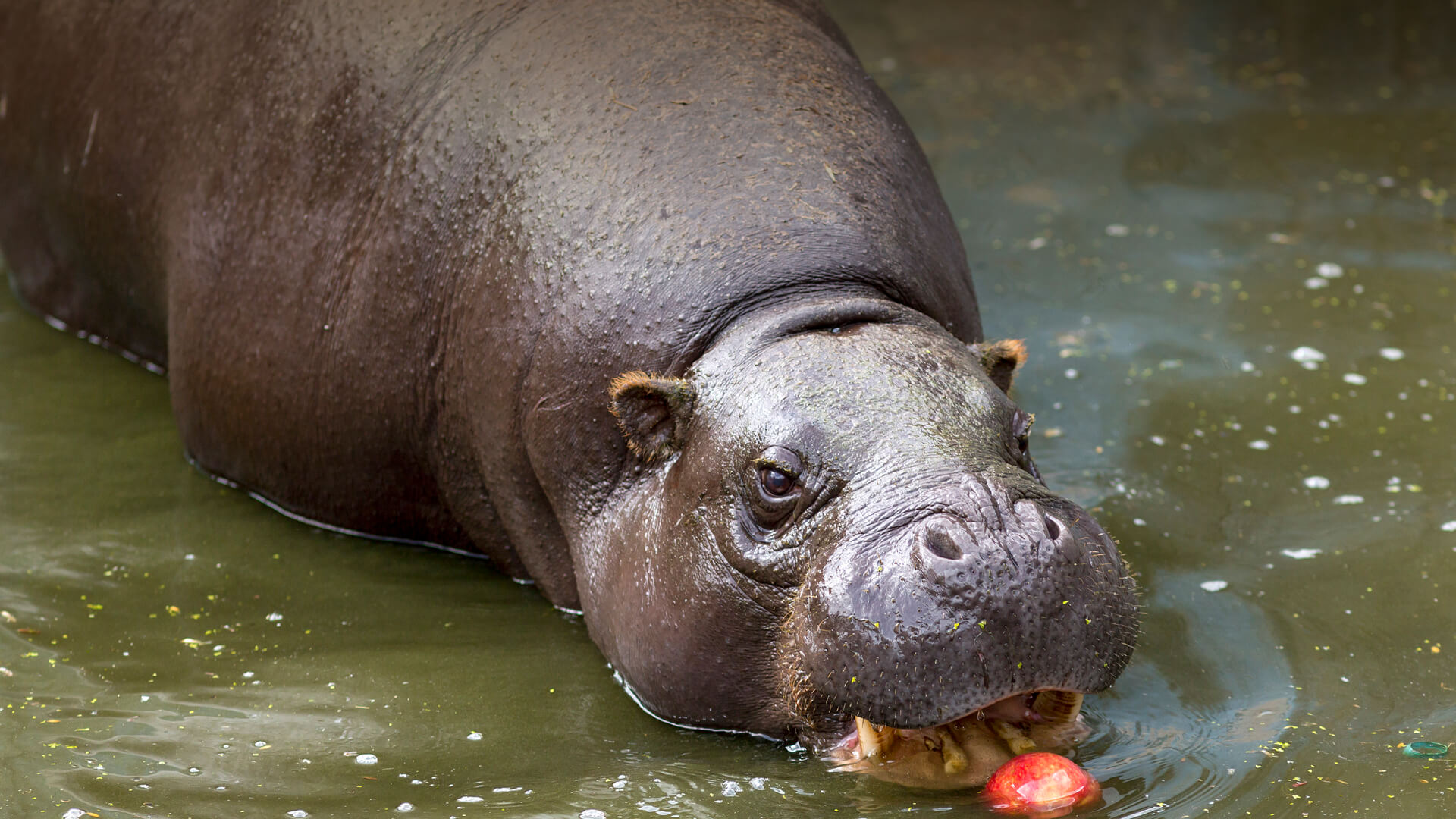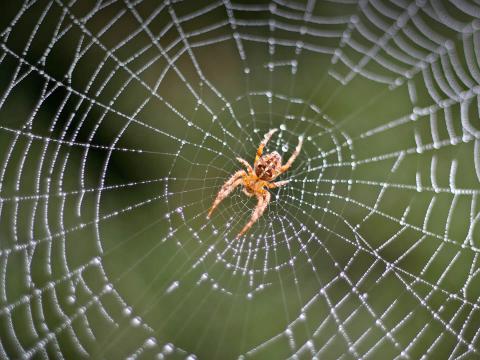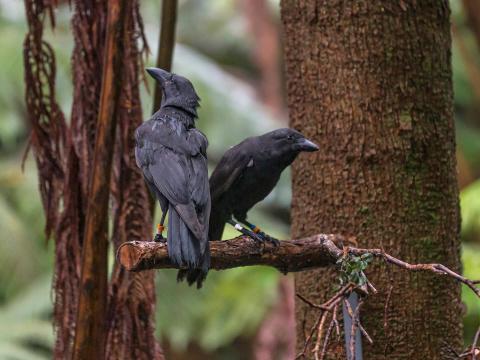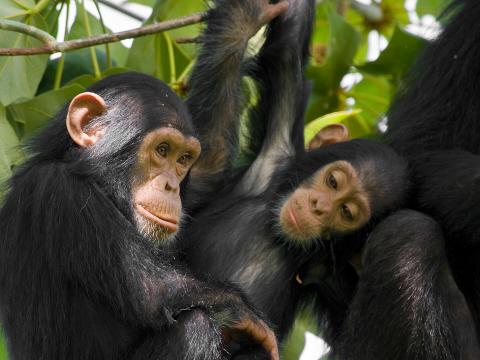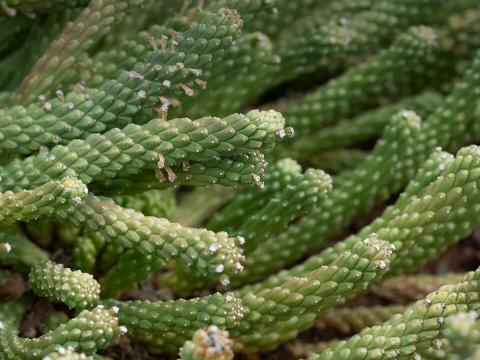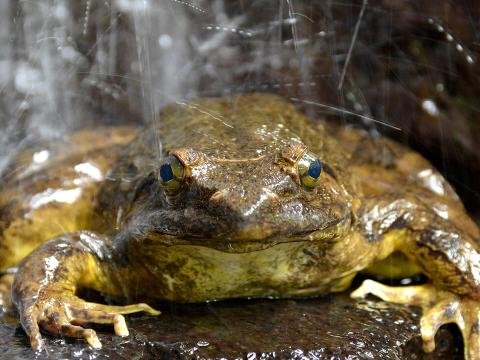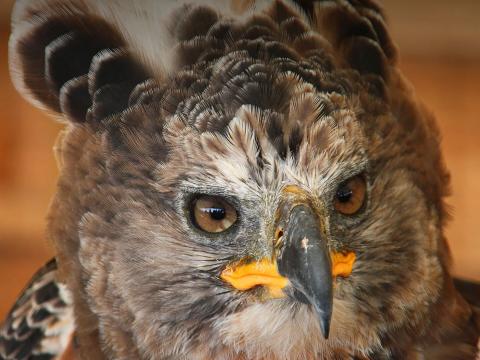Pygmy Hippopotamus
- CLASS: Mammalia (Mammals)
- ORDER: Artiodactyla
- FAMILY: Hippopotamidae
- GENUS: Choeropsis
- SPECIES: liberiensis
ABOUT
At first glance, a pygmy hippopotamus looks like a mini version of its larger relative, the hippopotamus (also known as a river hippopotamus or common hippopotamus). But it differs in behavior and physical characteristics.
Pygmy hippos have adaptations for spending time in the water but are much less aquatic than river hippos. Their nose and ears close underwater just like a hippo's do, but their heads are rounder and narrower, their necks are proportionally longer, and their eyes are not on top of their heads. A pygmy hippo's feet are less webbed, and their toes are more free than a hippo's, plus its legs are longer. A pygmy hippo's teeth are also different: they only have one pair of incisors, while hippos have two or three.
The top layer of a pygmy hippo's greenish-black skin is smooth and thin to help it stay cool in the humid rainforest. However, the thin skin could cause the hippo to dehydrate quickly in the sun, so its skin oozes out a pink fluid that looks like beads of sweat and gives the hippo a shiny, or wet, appearance. This fluid, called blood sweat, helps to protect a pygmy hippo's sensitive skin from sunburn.
Little is known about the behavior of pygmy hippos in their native habitat, but they are usually found by themselves or in pairs. With their cavernous mouth and formidable teeth and tusks, hippos need only “yawn” at potential enemies to send them packing. Other ways to stay safe include rearing, lunging, scooping water with their mouth, and head shaking. Unlike their larger relative, pygmy hippos are shy and would prefer to flee rather than stay and fight. Leopards seem to be the only natural predator able to successfully attack pygmy hippos.
HABITAT AND DIET
Not only are pygmy hippos much smaller than common river hippos, but they are much rarer, found only in the interior forests in parts of West Africa, mainly confined to Liberia, with small numbers in the neighboring countries of Sierra Leone, Guinea, and the Ivory Coast. As a shy, nocturnal herbivore, pygmy hippos eluded Western science until 1840. Even today, little is known about how they live in their native habitat.
Pygmy hippopotamuses are usually solitary but can sometimes be found in small family groups. Males, called bulls, have larger territories than cows (females) and both mark their homes with their droppings. Pygmy hippos are mainly nocturnal, resting while hidden in swamps, wallows, or rivers during the heat of the day until dark, when they leave the water to feed on land for a few hours in the cool of the night.
There is much more to learn about their herbivorous diet. Researchers believe that they most likely eat leaves, roots, ferns, and fruits near rivers and streams. Pygmy hippos search for food on the forest floor or in swamps but can stand on their hind legs to reach food higher up in trees if they need to.
At the San Diego Zoo, pygmy hippos eat hay and a variety of lettuces: romaine, iceberg, red leaf, and green leaf lettuce.
FAMILY LIFE
When pygmy hippo cows are ready to breed, there is usually a bull waiting nearby. Pygmy hippos may mate in the water or on land. The breeding season is unknown, but normally one calf is born after a gestation period of six to seven months. Although common hippos can give birth underwater, pygmy hippo calves are born on land. For the first few weeks, a mother tucks her calf, which looks like a large piggy bank, away in the bushes while she feeds, because the baby cannot walk well. The calf grows quickly, and at 5 months of age is already about 10 times its birth weight.
Although they can make noises—from a low grunt to a high-pitched squeak—pygmy hippos are usually silent. Body language is important in hippo culture. Signs of submission include lying prone and urinating while slowly wagging the tail. If alarmed, pygmy hippos release their breath with a loud huff.
CONSERVATION
Known to live in only four countries in West Africa, pygmy hippos are now classified as Endangered, with possibly less than 2,500 individuals remaining in their native habitat. The forests that shelter them are being cut down or burned away, and the rivers where they swim are now polluted by people. In logged areas, people hunt them for their meat. Pygmy hippos have full legal protection in all four countries where they live, but greater conservation action is needed to safeguard their future.
By joining San Diego Zoo Wildlife Alliance as an ally for wildlife, you help save species worldwide.

